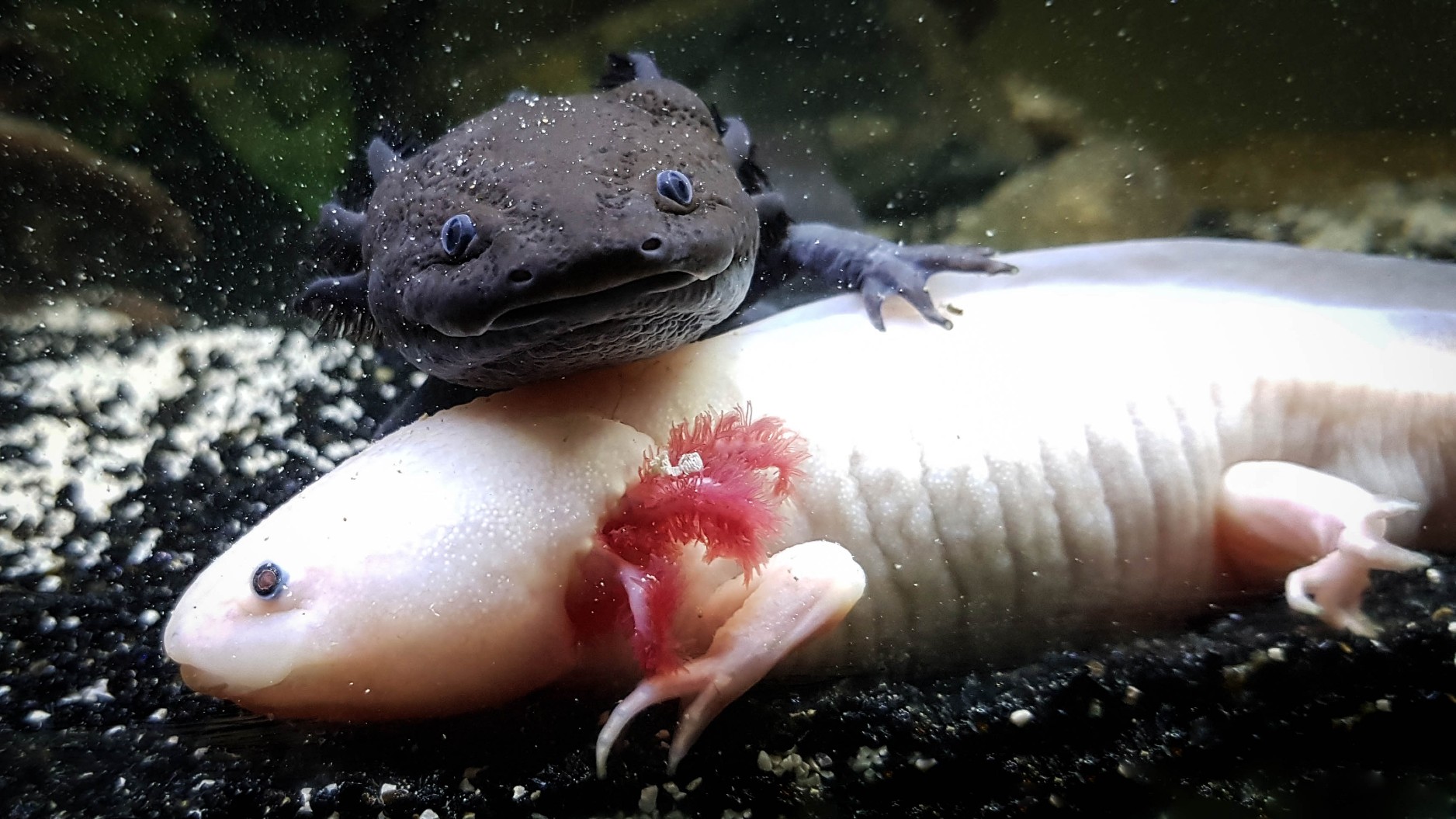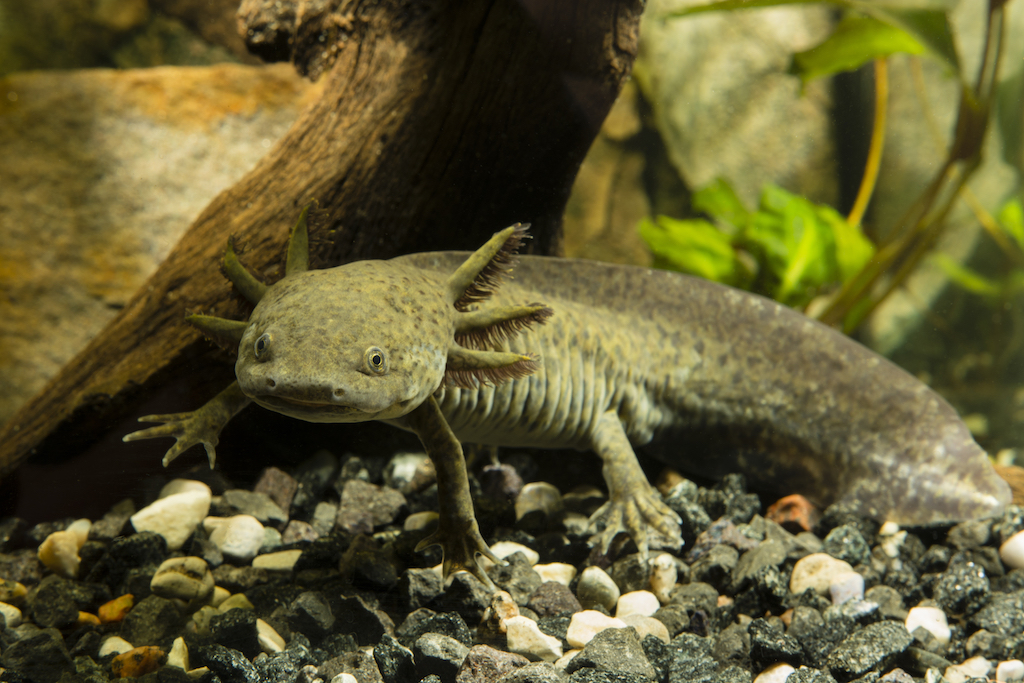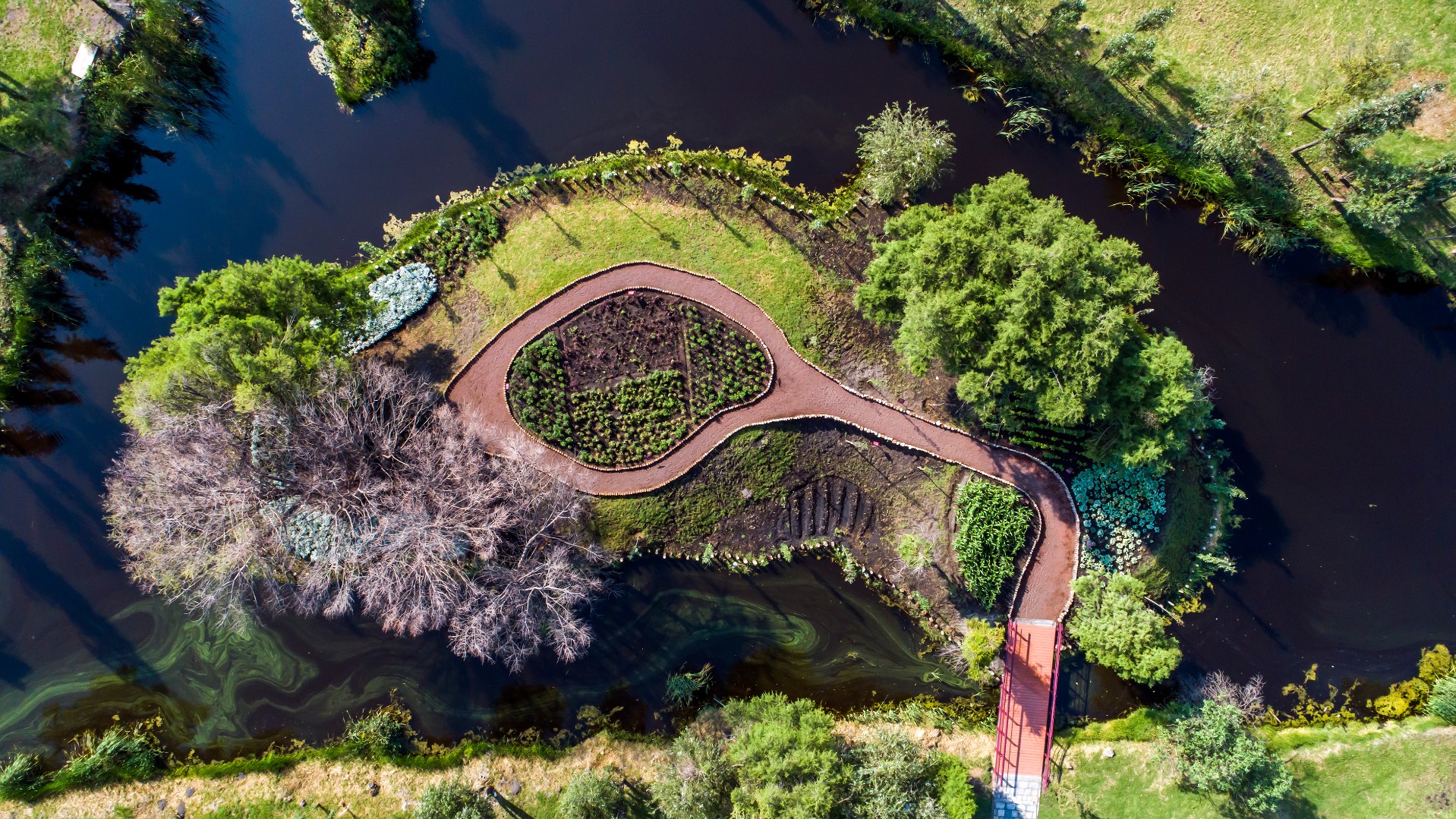Axolotls: The adorable, giant salamanders of Mexico
Axolotls are cute, charismatic salamanders that have an almost otherworldly ability to regenerate their body parts. But pollution and urbanization critically threaten this species' survival.

When the Aztecs settled the Valley of Mexico around what is now Mexico City in the 13th century, they found a large salamander living in the lake surrounding the island where they built their capital, Tenochtitlán. They called the salamander "axolotl" after Xolotl, their god of fire and lightning. Xolotl was said to have transformed into a salamander, among other forms, to avoid being sacrificed so the sun and moon could move in the sky; he was eventually captured and killed, according to Aztec mythology.
In the same vein, axolotls were commonly killed for food by the Aztecs and are still eaten in Mexico today. But beyond Aztec mythology and the dinner plate, axolotls have become one of the world's most famous salamanders, whether as pets thanks to their charisma and easy care, or more recently as highly sought-after characters in the popular online games Minecraft and Fortnite. The creatures' extraordinary ability to regenerate body parts has even made them an interesting study subject for scientists. But in their native home in Mexico, the salamanders are rapidly disappearing and are considered critically endangered.
Axolotls (Ambystoma mexicanum) are amphibians belonging to the single living genus of the family Ambystomatidae. There are more than 30 salamander species in the Ambystoma genus, known as the mole salamanders, according to the University of California, Berkeley’s, AmphibiaWeb.
Axolotls can grow on average to a length of 9 inches (20 centimeters), but some have grown to more than 12 inches (30 cm) long. In captivity, the salamanders live an average of 5 to 6 years, but some have lived for up to 17 years, according to the University of Liverpool's The Animal Ageing and Longevity Database.
Where do axolotls live?
Wild axolotls live exclusively in the swampy remnants of Lake Xochimilco and the canals leading to it on the southern edge of Mexico City. Axolotls also once lived in Lake Chalco, another of Mexico City's five "great lakes" where the ancient Aztecs settled. But all of those lakes, except for Xochimilco, were drained by the 1970s to prevent flooding and to allow urban expansion, NBC News reported.
Axolotls' carnivorous diet historically put them at the top of the food chain. They eat anything they can snatch: Mollusks, fish and arthropods like insects and spiders. They even eat each other. In the 1970s and 1980s, though, the United Nations Food and Agricultural Organization introduced tilapia and carp fish to the salamanders' habitat to provide local people with more protein, according to JSTOR Daily. Those fish chow down on young axolotls and are an invasive threat to the salamanders.
How do axolotl reproduce?
Axolotl reproduction starts with dancing — literally. After a male and female nudge and stroke one another's urogenital opening called the cloaca, the salamanders step in a circle in a sort of waltz, according to the University of Michigan's Animal Diversity Web. The male then struts away while seductively shimmying his tail, luring the female to follow. As the two dance partners step together, the male drops a small white capsule full of sperm called a spermatophore. With the female in tow, the male moves forward until the female just skirts over the spermatophore and picks it up with her cloaca.
Axolotls go through this courtship once a year, typically between March and June. When the courtship dancing is done, the female axolotl will individually attach her 100 to 300 jelly-coated eggs to aquatic plants or rocks. Around 10 to 14 days later, the eggs hatch, and the young fend for themselves. It takes about a year for axolotls to become sexually mature.

Axolotls are one of several salamander species, however, that never metamorphose into terrestrial adults that are primarily lung-breathing. American evolutionary biologist Stephen Jay Gould described the adult salamanders as "sexually mature tadpoles" because they forever retain their juvenile characteristics: a fully aquatic lifestyle, a finned tail, and frilly gills. This evolutionary phenomenon of "everlasting youth" is called paedomorphosis, or neoteny. Scientists can force axolotls in the lab to metamorphose by introducing iodine to their environment or injecting them with thyroid hormones, but axolotl metamorphosis rarely occurs in the wild, researchers reported in 2015 in the journal BioScience.
Biologists considered this obligate trait of axolotls a major force of evolution – a characteristic that could genetically isolate a population from other nearby salamander species and, consequently, could drive the rapid development of new species. But a 2021 study in the journal Proceedings of the National Academy of Sciences (PNAS) found that select sets of genes from axolotls and their relatives are almost indistinguishable. Throughout their history, the various salamander species (some with obligate paedomorphosis, others not) have interbred, providing new and potentially important context for researchers trying to conserve axolotls and their relative, and implying that scientists could look to related but less-endangered salamander species to answer research questions for which axolotls have been used.
Why are axolotls endangered?
The International Union for Conservation of Nature and Natural Resources considers axolotls critically endangered and their population declining. Surveys in 1998 and 2008 found that the population density had dropped from about 6,000 individuals per square kilometer (0.4 square miles) to 100 individuals per square kilometer. A more recent survey in 2015 found about 35 individuals per square kilometer.
Pollution has been particularly detrimental to the species. Poor waste regulations and increasing tourism in Mexico City mean that trash, plastics, heavy metals and high levels of ammonia spilled from waste-treatment plants clog the canals where the salamanders live.
In coordination with the Mexican government, scientists, farmers and nonprofit organizations are working to restore the axolotl’s habitat, using floating islands of water plants, logs and mud called chinampas to filter the polluted water, National Geographic reported. Organizations are also providing opportunities for interested tourists to see the salamanders in their natural habitats, with proceeds going toward conservation efforts.
While a substantial captive axolotl population exists in research labs around the world, accounting for several thousand individuals, these salamanders stem from 34 individuals shipped to Paris from Xochimilco, Mexico in 1863. Consequently, the population suffers from high rates of inbreeding – a major problem for forming a healthy and sustainable population.

Axolotls in research
Among the axolotl's trademark talents is its ability to regrow almost any body part: feet, legs, tails and even bits of the heart and brain. The amphibians can even mobilize stem cells — cells that can pretty much form into any cell necessary — to repair an injured spinal cord, scientists reported in 2021 in the journal eLife. And axolotls don't stop with the regeneration of their own body parts. All sorts of organs, including eyes, can be transplanted between axolotls without rejection by the recipient body's immune system. In 1968, researchers showed that they could even transplant the head of one axolotl to another axolotl, and it functioned normally. The combination of these abilities makes axolotls attractive model organisms for scientists.
This ability to regenerate limbs and organs has contributed to a huge swath of research in regenerative biology, especially for medical applications. Researchers in 2013 discovered that white blood cells called macrophages are essential for axolotls’ regenerative abilities. Without these cells, the salamanders just form a scar at the injury site, implying that macrophages in some way pump the brakes of scar formation. In 2021, researchers reported in the journal Frontiers in Cell and Developmental Biology that the salamander’s macrophages come from its liver, not from bone marrow as they do in humans. While tissue and organ regeneration in humans is likely far more complicated than in a salamander, the finding provides researchers with a new and somewhat unexpected place to look in humans for potential regenerative therapies.
In 2018, researchers discovered another oddity about axolotls: Their genome is enormous. At about 32 billion pairs of DNA nucleotides, the axolotl genome dwarfs the human genome (which is about 10 times smaller) and ranks as the largest animal genome sequenced from beginning to end so far. Researchers in 2021 finally put those 32 billion base pairs in the order they’re found on the salamander’s chromosomes and uncovered how they’re packaged. They reported in PNAS that the massive scale of the axolotl genome comes with some interesting consequences: The cell cycle that produces new cells takes 3 to 4 times longer than the typical 24 hours in most vertebrates. And the genes responsible for making a protein in the body sometimes spanned hundreds of thousands of base pairs long — 100 to 1,000 times longer than in humans. Researchers are still wading through data from the genome to uncover the molecular secrets behind the axolotl's regenerative abilities, and to learn if such genetic machinery could ever be activated in humans to do the same.
Additional resources
- Check out some more key facts about axolotls, especially if you’re interested in finding out more about the axolotl's incredible regenerative abilities.
- What could happen if wild axolotls disappear for good?
- Discover how scientists and farmers in Mexico City are working to restore the axolotl’s habitat for the species to survive.
This article was updated on May 24, 2022, by Live Science Contributor Jeremy Rehm.
Sign up for the Live Science daily newsletter now
Get the world’s most fascinating discoveries delivered straight to your inbox.

Jeremy Rehm is a biologist who swapped microscopes and cadavers for a pen and paper as a science journalist. He holds degrees from Brown University and the University of California, Santa Cruz and has written for Nature, Scientific American, Knowable Magazine and National Geographic. Follow him on Twitter @jrehm_sci.










